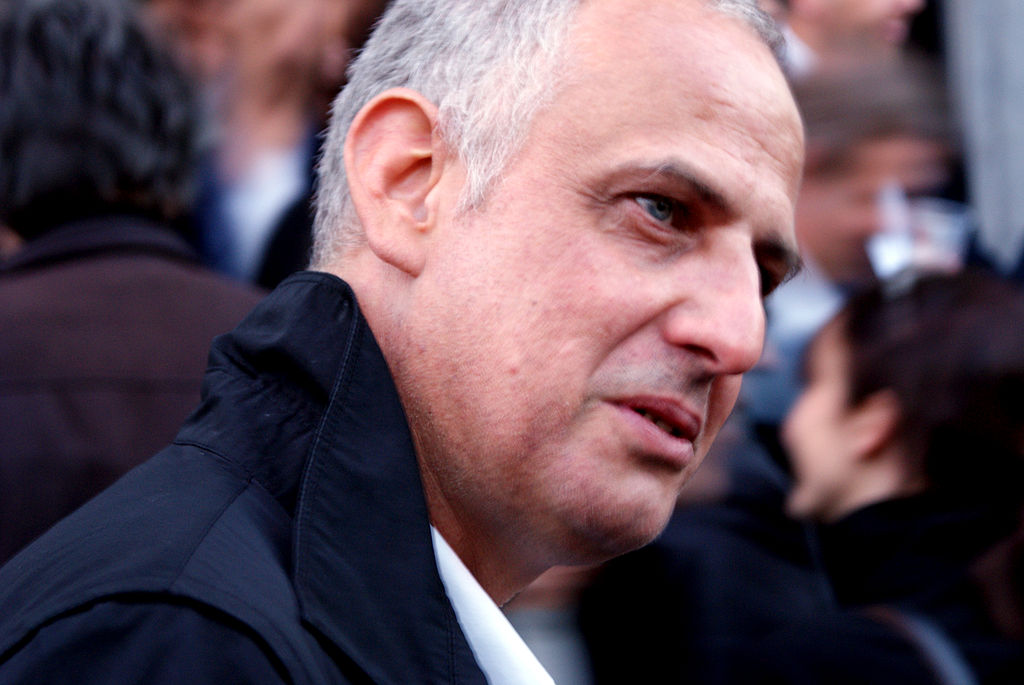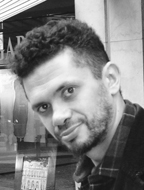« Features
From Local to Legal. Painting and Photography still at loggerheads.
According to Luc Tuymans, photographer Katrijn Van Giel accusing him of plagiarism started when he received a phone call from the Belgian center-right tabloid De Standaard. The paper, on the trail of a story, announced that they knew Tuymans’ painting of populist politician Jean-Marie Dedecker was based on a photograph shot by Van Giel, one of their regular contributors. Such an ominous warning, coupled with the fact that the relationship between the notoriously politically quibbling artist and the newspaper has always been defined by mutual disrespect, prompted Tuymans to contact Van Giel directly, who was apparently honored. “I said, ‘We’ll change it, we’ll talk about mentioning your name,’” recalls Tuymans. “And then she said, ‘Is that everything?’ Then, the next day, front page, painting, photograph, the whole shebang.”
When “the whole shebang” hit the court, Tuymans’ attorney Michaël De Vroey and his assertion that the work in question was a parody of the original, and as such couldn’t be considered a copy, failed to impress both the jury and Van Giel’s lawyer, Dieter Delarue, who retaliated by stating that this was the only possible way the artist could hope to escape judgment. “To my knowledge, Luc Tuymans is not really best known for his humorous works. This defense is more of a parody than the work itself.” The judge agreed with him, and Tuymans was sentenced to correspond Van Giel’s a compensation fee of $57,000 and to pay an additional €500,000 should he create more reproductions of the work or show it publicly again.
Delarue’s knowledge of art is evidently scarce. Tuymans has produced some of the most corrosive, ironic statements on every topic, from the bloodthirsty pit-bull-like rendition of Condoleezza Rice (2005) to the beautiful portrait of freedom fighter Patrice Lumumba, which criticized Belgian colonialism (2000). Humor is not just about caricatures and clown noses. It can also be dark and perverse. That said, it is fair to add that the artistry in Van Giel’s photograph, either incidental or deliberate, set it quite apart from mere photo reporting. The cropped, shut-eyed head of the politician, with the white sweat on his forehead plainly visible and deeply contrasted by the black background, makes it a rather sophisticated, if not opinionated, portrait. Tuymans’ interpretation, when compared to some of his other works, looks unusually weak. It seems that his source of inspiration, for once, has outdone him. Many have accused Tuymans of being either too lazy or arrogant or both. His labeling the area of Belgium where the fracas started as “moronic,” accusing photographers of being jealous of his success and trundling out the Queen of Holland among his supporters has done little to dismiss the arrogance part, but he is of course right on one point: Jealousy, in the form of monetary and critical success, is at the core of the issue.

Luc Tuymans, opening of "Against the Day" exhibition, WIELS, Brussels. April 25, 2009. Photo: Marcwathieu. Courtesy of commons.wikimedia.org.
Bob Dylan’s recent controversy about his paintings being based on famous photographs stirred a relatively low-key debate in comparison. The general consensus was that Dylan, whose relevance in art is inversely proportional to the one he has in music, was just doing what almost every diligent Sunday painter or art student does–copying. Had Tuymans been a mediocre artist with his painting positioned in a different context, there would have been hardly any trouble. As it was universally deemed a masterpiece and purchased by Groupon CEO Eric Lefkofsky for an undisclosed but presumably large sum indeed, all hell broke loose. Throw in the mix the recent phone/social media proliferation of images and the relative inability of copyright laws to keep pace, with amateurs accusing masters of copying them and vice versa, and you can justify the photography community’s increasing sensitivity about the subject.
In strict practical terms, there are two instances in which the accusation of plagiarism stands up-when there is an intellectual paternity at stake (and this is not the case, as Tuymans has always been open about the provenance of his source materials) and when someone is making a profit instead of somebody else (and this not the case either, as Van Giel’s photograph would have hardly made it to Lefkofsky’s collection on its own merits). In the 1950s, a popular architecture magazine sued a wallpaper company bearing the same name on the grounds that the similarity could have had financial repercussions. The judge dismissed the case, as he viewed it unlikely that a client would go to a newsstand and walk away with a paper roll instead of a copy of the magazine without noticing the difference.
The majority of people who have been involved in any form of litigation are fond of saying that in retrospect they wish they had settled. This is not just because litigation is one of the most expensive forms of entertainment, with clients selecting their boxers and watching them fighting from ringside, but also because once a contention enters legal territory, every verdict constitutes a precedent for similar future cases. At the time of this writing, the Tuymans versus Van Giel sentence has been appealed, but either way, the final decision has all the potential to become explosive. Should the court confirm Tuymans’ guilt, the entire concept of appropriation in art will turn into a no-entry zone. Never again will an artist dare to draw inspiration from existing images without the fear of incurring a hefty fine. Should the court rule in favor of Tuymans, however, the last nail in the coffin of the already seriously ill ‘Professional Photographer’ category will be hammered for good.
Michele Robecchi is a writer and curator based in London. Former managing editor of Flash Art (2001-2004) and senior editor at Contemporary Magazine (2005-2007), he is currently a visiting lecturer at Christie’s Education and an editor at Phaidon Press, where he edited monographs on Marina Abramovic, Francis Alÿs, Jorge Pardo, Stephen Shore and Ai Weiwei.




































Leave a Reply
You must be logged in to post a comment.